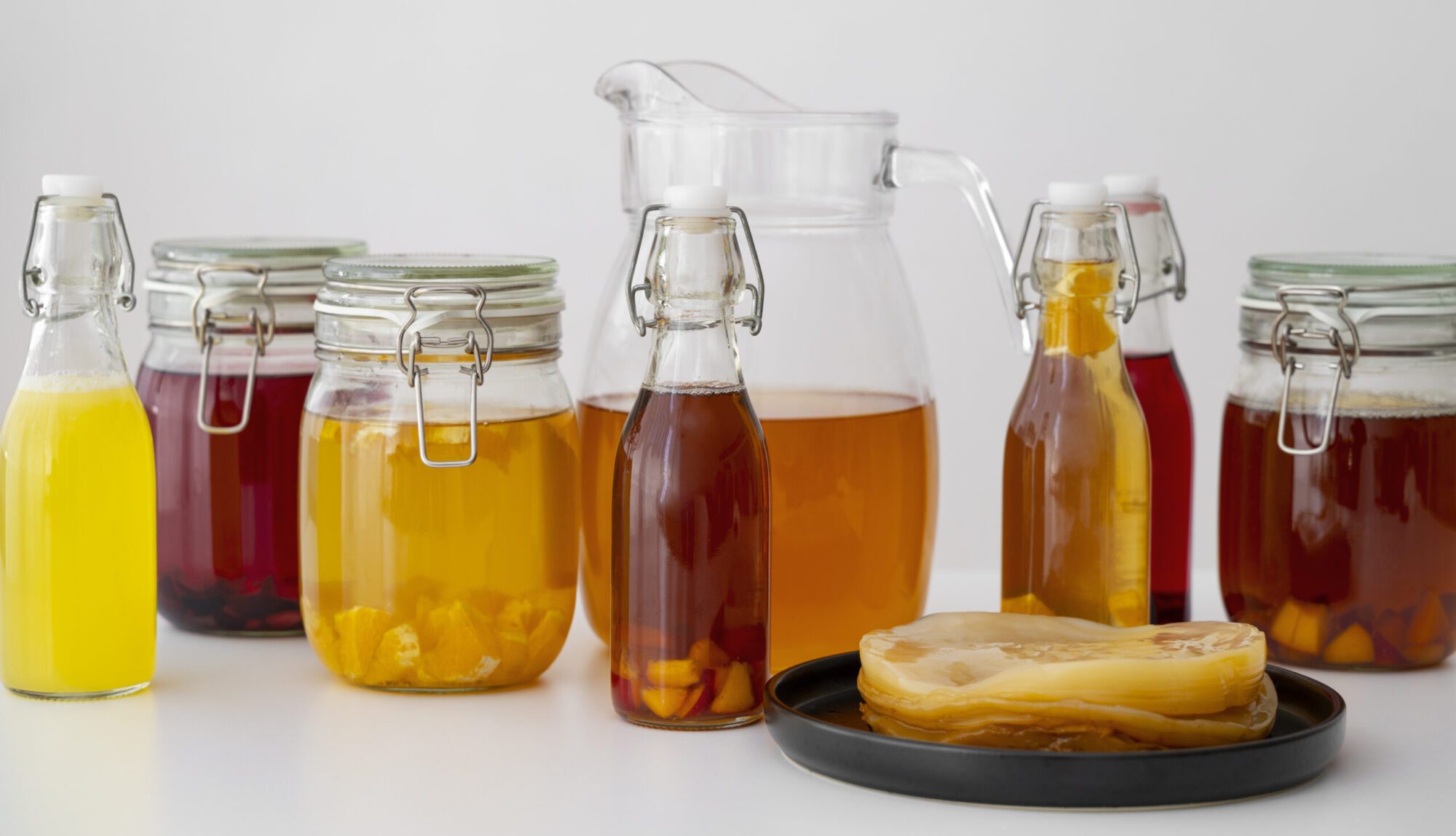The Complete Guide to Making Kombucha at Home

The Complete Guide to Making Kombucha at Home
Kombucha has been making a major resurgence in recent years. This fizzy, fermented tea has become the drink of choice for many health-conscious individuals, thanks to its probiotic properties and potential health benefits. While store-bought kombucha can be expensive, making it at home is surprisingly simple and cost-effective. In this complete guide, we’ll walk you through everything you need to know to make delicious and nutritious kombucha in the comfort of your own kitchen.
What is Kombucha?
Kombucha is a type of fermented tea that has been brewed for thousands of years, with its origins traced back to China. It is made by fermenting sweetened tea with a symbiotic culture of bacteria and yeast (SCOBY). The end result is a slightly tangy, slightly sweet, and slightly fizzy beverage that has become a popular choice for consumers looking to improve their gut health and overall wellness.
Health Benefits of Kombucha
Kombucha is often touted for its potential health benefits. Some studies suggest that it may help improve digestion, boost the immune system, and even reduce the risk of certain diseases. The fermentation process also produces beneficial probiotics, which are known to promote good gut health. However, it’s important to note that more research is needed to fully understand the potential health benefits of kombucha.
Getting Started with Making Kombucha at Home
Before you can start brewing your own kombucha at home, you’ll need a few key ingredients and equipment. Here’s what you’ll need to get started:
– A SCOBY: The most important ingredient for making kombucha is the SCOBY, which is the living culture that initiates the fermentation process. You can obtain a SCOBY from a friend who makes kombucha or you can purchase one online.
– Tea: Kombucha is traditionally made with black or green tea, but you can also use a combination of both. Avoid using flavored teas or teas with added oils, as this may harm the SCOBY.
– Sugar: The sugar serves as food for the SCOBY during the fermentation process. While it may seem counterintuitive to add sugar to a healthy beverage, most of the sugar is consumed by the SCOBY during the fermentation process.
– Water: You’ll need filtered water to brew your kombucha. Tap water may contain chlorine or other chemicals that can harm the SCOBY.
– A large glass jar: You’ll need a large glass jar to brew the kombucha in. A 1-gallon jar is a good size for beginners.
– A cloth and rubber band: You’ll want to cover the jar with a cloth to keep out debris and insects. A rubber band will keep the cloth in place.
The Brewing Process
Once you have all of your ingredients and equipment, you can begin the brewing process. Here’s a step-by-step guide to making kombucha at home:
1. Brew the tea: Start by brewing a strong batch of tea using your preferred black or green tea. You’ll need around 4-6 tea bags for a 1-gallon batch of kombucha. Steep the tea in hot water and then add the sugar, stirring until it dissolves. Allow the tea to cool to room temperature.
2. Add the SCOBY: Once the tea has cooled, transfer it to your large glass jar and add the SCOBY. If you obtained your SCOBY from a friend, you may also have some starter liquid that you can add to the jar. This helps to lower the pH of the tea and protect the SCOBY during the initial stages of fermentation.
3. Cover and ferment: Cover the jar with a cloth and secure it with a rubber band. Place the jar in a warm, dark area where it can ferment undisturbed. The fermentation process typically takes around 7-14 days, depending on the temperature of the room and your personal preference for taste.
4. Taste test: After a few days, you can begin to taste your kombucha to see if it has reached your desired level of fermentation. It should be slightly tangy and slightly fizzy when it’s ready.
5. Bottle and flavor (optional): Once your kombucha has reached the desired level of fermentation, you can bottle it and add flavoring agents if you’d like. This can be done by simply adding fruit juice, herbs, or spices to the bottle before sealing it and allowing it to ferment for an additional few days.
6. Enjoy: Once the second fermentation is complete, your kombucha is ready to enjoy. Store it in the refrigerator and consume it within a few weeks for the best flavor and fizz.
Tips and Tricks for Making Great Kombucha
While making kombucha at home is relatively simple, there are a few tips and tricks that can help you to achieve the best results.
1. Use a clean jar and equipment: It’s important to thoroughly clean and sanitize all of your equipment before brewing kombucha. This will help to prevent the growth of harmful bacteria and mold.
2. Don’t use metal or plastic: When brewing kombucha, it’s best to use glass or ceramic containers. Metal can react with the acidic nature of the kombucha, and plastic can harbor unwanted bacteria.
3. Be patient: The fermentation process can take time, so don’t rush it. Let your kombucha ferment at room temperature until it reaches your desired level of tanginess and fizziness.
4. Experiment with flavors: Once you have the basic kombucha brewing process down, feel free to experiment with different flavors. Fresh fruit, herbs, and spices can all be added to the second fermentation to create unique and delicious flavor combinations.
Common Kombucha Brewing Mistakes
While making kombucha is relatively straightforward, there are a few common mistakes that beginners often make. Here are a few things to avoid:
1. Using flavored tea: Flavored teas often contain oils and additives that can harm the SCOBY. Stick to plain black or green tea for the best results.
2. Letting the tea cool too long: It’s important to let the tea cool to room temperature before adding the SCOBY, but you don’t want to let it cool for too long. If the liquid is too cold, it can shock the SCOBY and slow down the fermentation process.
3. Not using enough starter liquid: If you obtained your SCOBY from a friend, it’s important to also use some of the starter liquid to help kickstart the fermentation process.
4. Using too much or too little sugar: The sugar is essential for the fermentation process, so be sure to measure it accurately.
5. Improperly covering the jar: You want to cover the jar with a cloth to keep out debris and insects, but it’s important to also allow airflow. Don’t use an airtight lid.
Final Thoughts
Making your own kombucha at home can be a rewarding and cost-effective way to enjoy this trendy and refreshing beverage. With a little patience and experimentation, you can create your own unique flavors and discover the joy of brewing your own probiotic-rich beverage. Whether you’re a seasoned kombucha brewer or just starting out, following the steps outlined in this complete guide will help you to achieve great results and enjoy all the health benefits of homemade kombucha. So grab your SCOBY and get brewing! Cheers to your health and happiness.
[elementor-template id=”430″]
[elementor-template id=”433″]




0 Comments